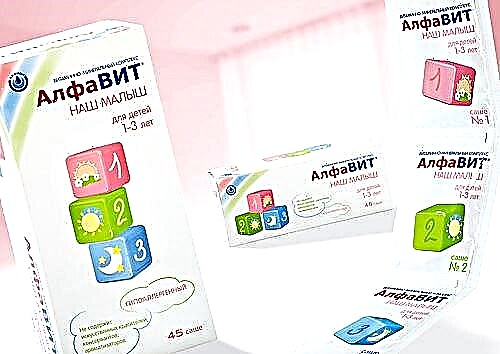Any signs of a child's illness cause concern and concern for parents. It becomes especially scary when, in addition to the usual snot or cough, the child's body becomes covered with a rash. If the temperature is not clearly visible, the mother may not remember it for some time, then the rash gives the child a particularly painful appearance and does not allow him to forget about the problem for a minute.

Rashes
Causes of cough and rash
A cough, like a rash, is not a disease. It is impossible to unambiguously choose a treatment just because the child began to cough, and then a rash appeared on the skin. The first thing a parent needs to do when a child develops a rash on the face or body and a cough is to see a doctor for a diagnosis. Only a specialist can determine the cause of a complex of symptoms. The source of the disease can be:
- bacterial or viral infection;
- allergy;
- blood disease.
Important! The treatment tactics for each case are different, so do not delay the visit to the doctor.
Infectious rashes
In nature, there are many viruses and bacteria that are causative agents of diseases that manifest themselves in a complex of symptoms, including both coughing and skin rashes. Diseases are contagious, with a wide radius of damage, which is why their names are well known to everyone. Among viral infections accompanied by rashes, one can distinguish:
- measles;
- rubella;
- chickenpox;
- sudden exanthema.
The peculiarity of the treatment of viral infections is that there is basically nothing to treat them. In the vast majority of cases, medicine is powerless against viruses. The only exceptions are chickenpox and herpes, as a type of chickenpox. Only against this virus was it possible to create a drug. With the rest - the body will have to fight on its own, if not vaccinated in advance.
It should be noted! In childhood, these diseases are much easier to carry than in adults. Therefore, it is advisable for adults who did not have chickenpox, for example, in childhood, to be vaccinated against it, because the form in which the disease will proceed can be fatally severe.
The bacteria cause a number of other, equally well-known infections:
- scarlet fever;
- meningitis;
- typhoid fever.
It is wiser to escape from bacterial infections with the help of special preparations - antibiotics, which will overcome the pathogen in the shortest possible time.

Vaccine
Important! There are also vaccines for many dangerous bacterial infections. It is unreasonable to risk a child's life by refusing vaccinations, since some of them (infections) can turn a child into a disabled person in a matter of hours or even take his life.
Non-infectious rash
A rash that is not associated with external microbial pathogens may be a manifestation of an allergic reaction. Most often, the skin reacts in this way to food or physical contact with an allergen. For example, you can often see red cheeks, buttocks, the inner surface of the elbow joints after the abuse of sweet, citrus or protein foods.
Contact dermatitis can occur after a child's skin has rubbed against a fabric dyed with aggressive dyes, or if the baby is wearing synthetic, non-breathable clothing. In combination with a cough, an allergy to the detergents used to treat the baby's linen is likely to manifest. Fragrances will spasm the airways or irritate the mucous membranes, which will cause a cough, and the skin will turn red from contact with the tissue on which the chemical remains, and a rash will form.
When a child suddenly has a rash and cough that it is an allergic reaction, parents may not always realize. The most common food that causes dry and irritating coughs accompanied by a rash is honey. With its sweetness and its constituent components, it irritates the mucous membranes of even adults, a complex composition of natural origin often becomes a provocateur of dermatitis.

Baby and honey
How to tell an allergy from an infection
The main differences between allergic reactions and infectious diseases are shown in the table below.
Differences between allergic and infectious diseases
| Symptom | Viral or bacterial infection | Allergy |
|---|---|---|
| Contact with a sick infection | Yes | No |
| Chills, fever | Yes | No |
| Runny nose | Yes | maybe |
| Cough | Yes | maybe |
| General weakness | Yes | No |
| Loss of appetite | Yes | No |
| Diarrhea / indigestion | maybe | Possibly (for dairy products) |
Attention! If parents have noticed an allergic reaction of a child to a product, you need to be careful with its use, since each subsequent reaction of the body to it can be much more pronounced than the previous one.
About possible diseases
An experienced doctor, having analyzed all the circumstances and primary symptoms, will be able to quickly diagnose and prescribe treatment.
Rubella
Based on the name itself, it is easy to guess that the first sign of rubella is redness. The rash is small and dim, the spots do not merge together. They first appear on the face, after a few hours they are scattered throughout the body. Simultaneously with skin reactions, a slight increase in temperature occurs - about 37˚C, a runny nose appears, and sometimes a headache. It is a runny nose with rubella that causes a cough - mucus, flowing down the back of the pharynx, irritates it. The doctor will distinguish rubella from other diagnoses by enlarged lymph nodes in the back of the head and neck.
Measles
The onset of the disease is manifested by a runny nose, cough, fever. A distinctive feature is eye inflammation in the form of lacrimation, redness, swelling of the eyelids. The rash appears on the third to sixth day after the first symptoms appear, mainly behind the ears and on the face. It gradually descends over the body and after a couple of days covers the legs.
Scarlet fever
The first symptoms are a sore throat and a significant increase in temperature. After a number of hours, a bright rash appears on the body, which seems to consist of two parts: a dim background and bright dots. Eruptions are especially profuse on the sides, as well as in the folds of the arms and legs. The characteristic differences of the rash are bright cheeks on the face contrast with the white nasolabial triangle. The tongue takes on a bright crimson hue, and its papillae noticeably increase in size. Tonsils are red, with a purulent bloom. The skin with scarlet fever becomes dry and rough, peeling off by the end of the disease. This is due to the fact that a huge number of epidermal cells die.
Attention! A rash, cough and fever in a child most often occurs precisely because of scarlet fever.
Chicken pox
A popular viral rash that affects the entire body, accompanied by weakness, headaches and fever. Coughing is not a symptom of chickenpox, but it can be present as a separate health problem that is not associated with the chickenpox virus.

Chickenpox
Allergic bronchitis
The defeat of the mucous membranes of the lower respiratory tract occurs when inhaling air with impurities:
- tobacco smoke;
- dust;
- vapors of chemicals;
- flavor particles.
If a child breathes in dirty air, the bronchi can become inflamed, and as a result, allergic bronchitis is diagnosed. Bronchitis is not accompanied by a rash. However, if the child managed to give the medicine to which the allergic reaction has occurred, it is likely that the symptoms of an allergic cough and a rash will appear at the same time.
Cough and worms
In the diagnosis of damage to the human body by helminths, there are no signs that unambiguously determine the relationship between the presence of worms in a person and coughing.
Life-threatening rash
If the redness on the skin looks like small hemorrhages, the child's condition has deteriorated sharply, vomiting and high fever are present, the child should be taken to the hospital as soon as possible. These are the typical symptoms of meningococcal infection - meningitis. According to medical statistics, it can take only a few hours from the onset of symptoms to death.
What not to do
The first thing sane parents should remember is that any rash should be shown to a doctor. If only because treatment depends on the diagnosis, and the rash is a symptom, but not a diagnosis.
It is also important to know that in case of chickenpox, in no case should the temperature be brought down with aspirin. Aspirin itself is not dangerous, but it is in combination with chickenpox that it gives serious complications.
Parents have a great opportunity to protect their child from contact dermatitis and allergic bronchitis. To do this, it is enough not to use aggressive chemicals when cleaning the room and dress the baby in clothes made from natural fabrics of neutral colors. It is impossible to protect yourself from viruses and bacteria, so you should not delay contacting a pediatrician, which will significantly speed up recovery.



